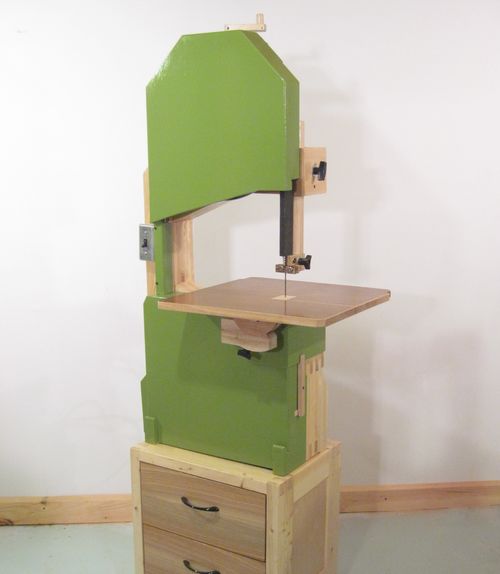
I built this one a few years ago, and have done sets for 9 or 10 guitars on it, plus other projects. Actually, make that about 16 guitars....I was thinking of the ones I have completed with the wood I sanded on it. I love it, its a great sander, but some thoughts.....
I would try for something more than 1 hp. Even on narrow peices only removing about .010" per pass, it can bog down fairly easily. I made mine about 20" wide at the sled to allow me to run a full joined top or back through it, or to sand a rosette when complete. It does fine, but removes about .005" at a time when that wide.
I started with PVC, but could not get it to turn without vibrating....the PVC pipe is not round, and is difficult to true. Any attempt to sand or scrape the highspots at any speed results in PVC angel hair everywhere. I did plywood, and used it that way for several years, though I think, over time, the plywood has shrunk leaving it out of round again. Some spots vibrated, others were fine.
I have since made a MDF disc-based roller, and it is the truest roller I have made yet. I got it almost perfect last fall, but started several other projects that did not require a sander, so have left it till I need it.
I have always used adhesive backed paper. Goes on easy, but is a bitch and a half to get off. You build up heat from friction, and the adhesive melts into the wood grain. It does not come off well at all. I would go with a hook&loop style paper attachment for long term.
I used cut up bike tube strips to make dust "flaps". I found it far easier to use than a sliding gate. It does, however, reduce the amount of suction over the roller, as the surface area in the open is far greater. A typical shop vac, however, will pull all of the airborne dust from the device. All you are left with is sawdust too heavy to be airborne....I got no dust floating through the air. All in all, the vac pulled about 80% of the dust generated, and the remaining either stays under the roller, or gets pushed out the other side to the floor. I did it cheap and quick, I'm sure you guys could all do a better job.
I have seen a mod to this design that I quite liked, and may someday try, if my craftsmanship improves. Rather than a single threaded rod as used in this design, the table floated on top of four sprockets. The sprockets were tapped (or had tapped bushings) that rode the threaded rod underneath the table. All four sprockets (think the smaller rear-wheel sprockets from a bike) were connected to a crank with a bike chain. Any adjustment moved the entire table up and down without changing the level. If you google it, I am sure you could find it.
Otherwise, it was a fun project, and has been quite useful to me. I'm glad I built it, and will be even more glad when I finish reworking the roller. It's a great winter project when you can't really be building guitars in the garage. My next big one will be a home-built bandsaw:


